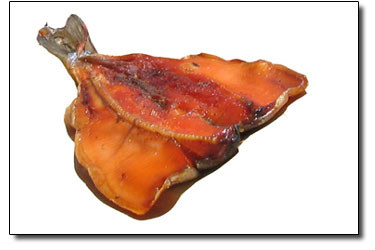| ||
How (and why) to dry a fish by Chef Boy Ari Fishermen and fisherwomen have given a lot to America. They’ve created some of the more colorful additions to our ever-evolving language, for example, especially in the four-letter word category. Consider the spontaneous and intractable fishing-line knot known as the “Oregon A-hole.” Many great storytellers, meanwhile, have found inspiration in the mysterious act of fly-fishing, and the ecstatic connections it opens between human, river and fish. Some lyrical luminaries have made a case for the interchangeability of fly-fishing and religion, and no less of a man than Jesus Christ has been called a great fisher of souls. Fishers have also done a lot to protect fish habitat, the irreplaceable lakes, rivers and oceans that are the lifeblood of our planet. For every stream that hasn’t yet been paved over, thank a fisher. Philosophy, vocabulary, conservation and salvation aside, the best thing that fishers give us, of course, is fish. My neighbor loves to fish, and because he does, I don’t have to. Actually, it’s because of his wife, who is sick of fish, that I don’t have to fish. Most days, poor Bill can’t get in the door with his sack of trout, salmon, whitefish or walleye, and that’s when I see him walking across the yard with a gift. Actually, if he has walleye he lowers his shoulder and gets in the damn door. The other day Bill brought me a bag of the most beautiful kokanee salmon I’ve ever seen. Kokanees, landlocked versions of sockeye salmon, are red, oily and some of the best things you can possibly put in your mouth. I was scheduled to leave on a weeklong camping trip that evening, but I had to delay departure – long enough to make some kokanee jerky. By the way, what I’m about to tell you applies to any fish, including what you can get at the store. So before you stop reading because you don’t have a neighbor like mine, remember that you have options.
After cleaning the fish, I cut off their heads and placed the bodies, dorsal side down, on the cutting board and did a butterfly cut: passing a filet knife along one side of the spine, separating all the ribs at the spine and cutting the meat all the way through to the dorsal skin, collar to tail. Thus cut, the entire fish can be opened and laid flat. This is very important for even drying. If you are using other cuts of fish, the take-home message is the same: you want even thickness for even drying. I then sprinkled the bottom of a glass baking dish with coarse salt and laid a flattened fish upon the salt. I gave a good squeeze of lemon on top, a squirt of liquid aminos, and more coarse salt and fresh black pepper. Then I laid another fish atop the first and repeated the process until I had a stack. It’s the salting, not the dehydrating or smoking to follow, that cures the fish. With these 10-inch 1-pounders, I sprinkled about 2 teaspoons of salt atop each fish. Then I covered the stack and let it marinate all day before putting it in the dehydrator overnight. It’s not the most complex marinade, but I wanted something simple to highlight the flavor of the fish. The next morning, the fish were mostly dry, but still a bit moist on the inside. Since the salt had already worked its way into the flesh, I wasn’t worried about spoilage, but I was worried about a campsite mess. So I bagged and froze most of my fish for Perfect Salad upon our return, and placed the remaining fish on the truck’s dashboard for further dehydration. Thus laden, we drove south into the hot sun. The truck smelled like dried fish all the way to Utah, at which point the fish were dried enough for canyon country. Dried fish in camp is a wonderful thing, unless you’re camping in grizzly country – which we weren’t. If you’re camping in bear country, do not take dried fish. When we returned home, the salad greens we’d left behind as babies had grown up. We harvested leaves of spinach, mizuna, arugula, lettuce, kale, parsley, onions and garlic, and tossed them with pressed raw garlic cloves. We tossed the greens in olive oil, balsamic and sherry vinegar (2:1, oil: vinegar). It being too early yet for tomatoes, we substituted pickled sweet peppers from the pantry. Perfect Salad, or salad as a meal, includes fresh greens in vinaigrette, topped with a nice assortment of protein and fat-rich goodies, like feta, olives and, most importantly, dried-but-not-dried-to-a-crisp fish. It’s best served with bread. With a toasted baguette, a bottle of wine and the dehydrated fish, which had been slowly warmed to room temperature, we ate our Perfect Salad, munching our thanks to the fishers of the world and their long-suffering spouses. •
|
In this week's issue...
- May 15, 2025
- End of the trail
Despite tariff pause, Colorado bike company can’t hang on through supply chain chaos
- May 8, 2025
- Shared pain
Dismal trend highlights need to cut usage in Upper Basin, too
- April 24, 2025
- A tale of two bills
Nuclear gets all the hype, but optimizing infrastructure will have bigger impact


